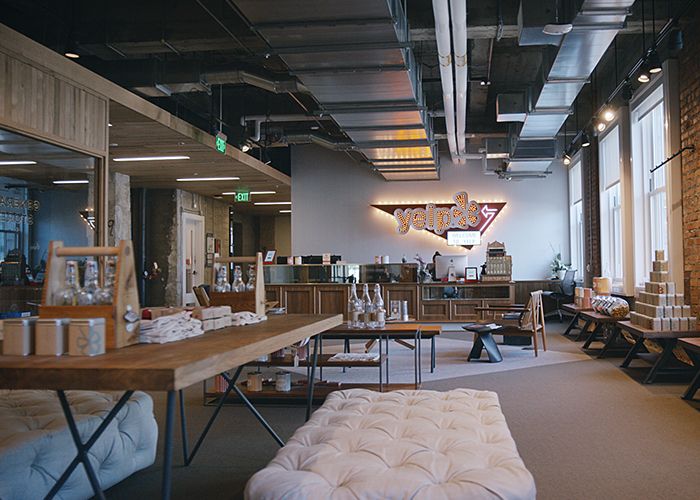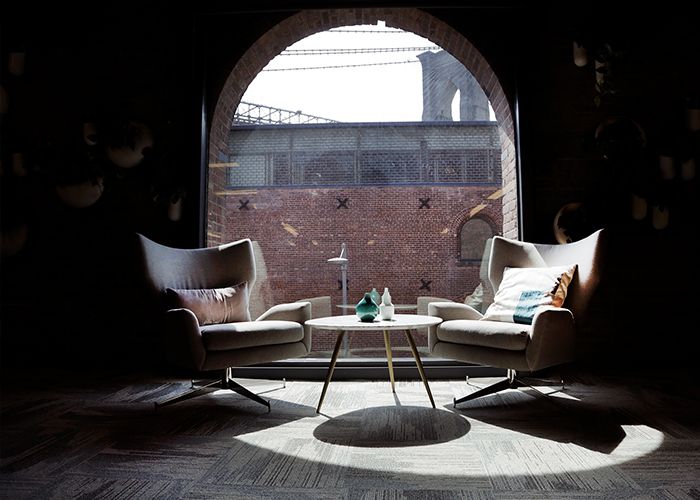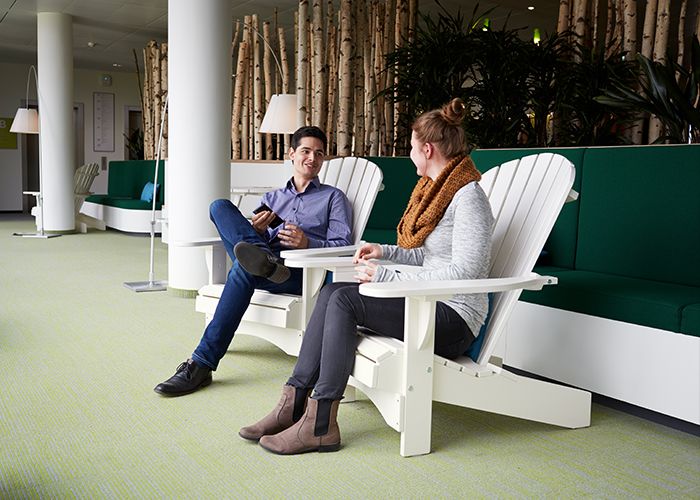Blurred lines indicate that fast-moving trends shape the way we live, work and play. One such trend is the influence of the hospitality industry on corporate office design. Even as hospitality itself changes (i.e. lobby as living room, focus on well-being, impact of biophilic design, emphasis on locale, etc.), those developments are popping up in the design of commercial and corporate spaces as well.
Demand for flexible work spaces, intersection/collaboration zones, quiet zones and concierge services all focus squarely on the employee. As employers try to attract and retain talent in a competitive world, such offerings are not just nice to have — they are expected.
One designer at the forefront of this trend is Lauren Rottet who believes the trends from the hospitality industry are having a strong impact on commercial office space. This extends well beyond the mere design and décor of the space to programming, space planning, and functionality of the office itself.
The office as a collaboration space
As the world becomes more global than ever before, there is a simultaneous desire to connect on a regional level: through food & beverage, through décor and through art, for example. These tendencies change the way people interact with one another. They also change the way people interact with their surroundings.
There is a growing assumption that our workspaces have a huge impact not only on the quality of our output but also on our general well-being. Office size is no longer the focus. Instead, more shared space for collaboration, more social hubs for spontaneous and organic interactions, and less private space have moved to forefront of design. Communal work space allows for innovation and employee satisfaction that builds corporate culture. This ultimately will reflect on the corporate brand — a huge takeaway from the hospitality industry.
Yelp’s San Francisco HQ has a lobby that looks like a modern version of the general store, one that’s cozy and perfect for collaboration and relaxation.
Furniture retailer West Elm has an NYC headquarters with plenty of residential furnishings and finishes that make spaces feel like home.
The Philips HQ in Hamburg, Germany features plenty of open, collaborative space that mimics open porches and residential finishes.
Taking a cue from hospitality
Hospitality design has informed office design in other ways: the influx of less stiff office furniture, more residential-type products, fewer corporate finishes and materials, and more wallpaper. The infusion of the residential in FF&E is transforming the interior space of the office environment. Combine that with concierge services, access to healthy food and fitness facilities, and commercial office space becomes unlike anything we’ve seen before.
Here are some major shifts in commercial office spaces that come directly from the hospitality industry.
- The concept of “work anywhere” – this is seen in the social hub atmosphere of the office, where there is more quality, shared work space, and less private space.
- Deceptively simple design – almost museum-like, with a shift back to contemporary design.
- Quality of space over size – more boutique-like, fun, casual, quiet and comfortable.
- A shift of focus from the employer to the employee – with an eye on employee health/wellness and concierge-type services to compete for talent and create employee brand loyalty.
According to Rottet, “Your image becomes your brand.” This could not be truer. As savvy brands discover the powerful connection between their brand, their culture and their physical environment, they unlock the potential for greatness and the cult-followings they seek. And of course, create +Positive spaces™ for employees and customers alike!
For an excellent case study that showcases most of the trends discussed here, check out the Boston Consulting Group’s New York office space.


